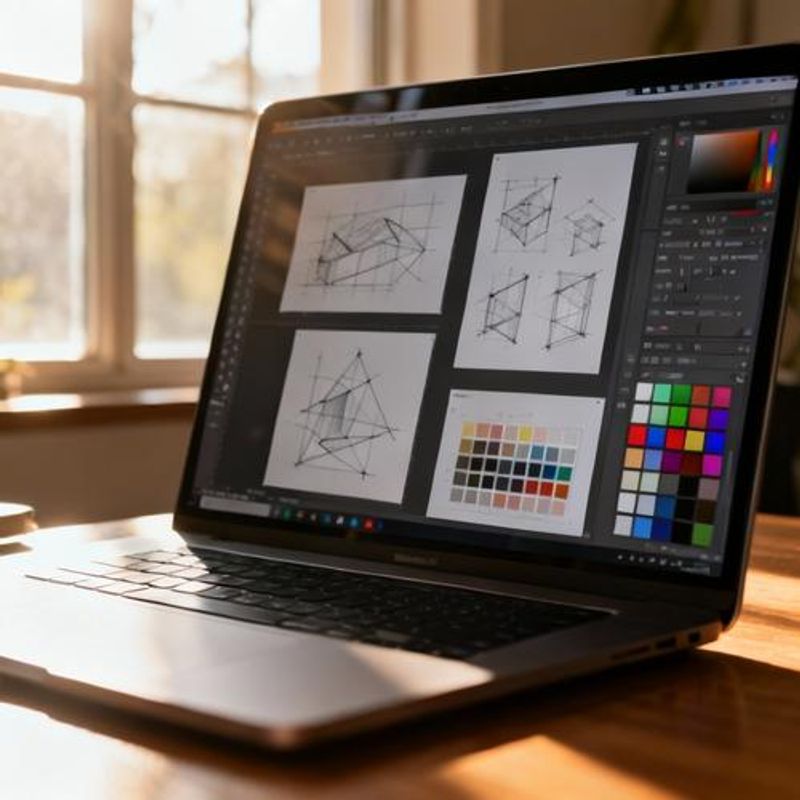The Complete Guide to AI Tools for Designers: Boost Your Creative Workflow in 2024

As a mid-level designer, you're probably spending 60-70% of your time on repetitive tasks that could be automated. Whether it's resizing assets for multiple platforms, generating color palettes, or creating variations of layouts, AI tools for designers can reclaim hours of your week while maintaining creative quality. This comprehensive guide will show you exactly which AI tools solve real design challenges, how to integrate them into your existing workflow, and which ones actually deliver on their promises.

Why AI Tools Matter for Mid-Level Designers Right Now
You're at a crucial stage in your design career where efficiency directly impacts your growth trajectory. Unlike junior designers who need to learn fundamentals, or senior designers with established systems, you're building your reputation while managing increasing project complexity. AI tools for designers aren't about replacing creativity—they're about eliminating the bottlenecks that prevent you from focusing on strategic design decisions. The challenge isn't finding AI tools; it's identifying which ones integrate seamlessly with your current Adobe Creative Suite workflow and actually save time rather than creating new learning curves.
Quick Reference: Top AI Tools by Design Task
Here's what experienced designers are actually using to streamline their most time-consuming tasks:
- Background removal & image editing: Photoshop's AI features, Remove.bg, Clipdrop
- Layout generation & wireframing: Figma AI, Uizard, Galileo AI
- Color palette creation: Khroma, Coolors AI, Adobe Color's AI suggestions
- Copy and content generation: ChatGPT for design briefs, Copy.ai for marketing materials
- Image generation & inspiration: Midjourney, DALL-E 3, Stable Diffusion
Essential AI Tools for Daily Design Tasks
Adobe's built-in AI features should be your starting point since they integrate with tools you already use. Photoshop's Content-Aware Fill and Object Selection have evolved significantly, while Illustrator's Recolor Artwork can generate dozens of color variations instantly. For layout work, Figma's AI plugins like FigJam AI help brainstorm concepts, while Auto Layout suggestions speed up responsive design creation. When working with clients who need multiple asset variations, tools like Bannerbear or Canva's Magic Resize become invaluable for maintaining consistency across formats. The key is building a toolkit that complements rather than complicates your existing creative process.
Advanced AI Integration Strategies
Create an AI-enhanced workflow by mapping tools to specific project phases. During discovery, use ChatGPT to analyze client briefs and generate targeted questions. In ideation, combine mood boards with AI-generated variations to explore directions quickly. For production, batch process repetitive tasks through tools like Photoshop Actions combined with AI upscaling. Establish quality checkpoints where you review AI outputs against brand guidelines—this prevents the generic look that comes from over-relying on automated suggestions. Consider creating custom prompts and templates for consistent results across projects.
Practical Implementation Templates
Start with a 30-day AI integration plan: Week 1 - Master one tool completely (recommend starting with Adobe's AI features). Week 2 - Add one image generation tool for concept exploration. Week 3 - Integrate a layout or wireframing AI tool. Week 4 - Combine tools in a complete project workflow. Create prompt libraries for consistent results: save effective prompts for common tasks like 'corporate color palettes,' 'modern logo concepts,' or 'social media layouts.' Document time savings to justify tool subscriptions and demonstrate ROI to clients or employers.

Common Pitfalls and How to Avoid Them
Avoid the 'shiny object syndrome'—don't try every new AI tool that launches. Focus on tools that solve specific pain points in your workflow. Watch for over-dependence on AI generation without developing your creative judgment. The most successful designers use AI as a starting point, then apply their expertise to refine and customize outputs. Be cautious about copyright and licensing issues with AI-generated content, especially for commercial projects. Always maintain design fundamentals; AI should enhance your skills, not replace your understanding of typography, composition, and color theory.
Next Steps: Building Your AI-Enhanced Design Practice
Start by auditing your current workflow to identify the most time-consuming repetitive tasks. Choose one AI tool that addresses your biggest pain point and master it completely before adding others. Track your time savings and quality improvements to build a case for premium tool subscriptions. As you integrate these AI tools for designers into your practice, you'll find more time for strategic thinking, client relationships, and skill development—the activities that truly advance your design career. The future belongs to designers who can blend human creativity with AI efficiency, and starting now gives you a significant competitive advantage.